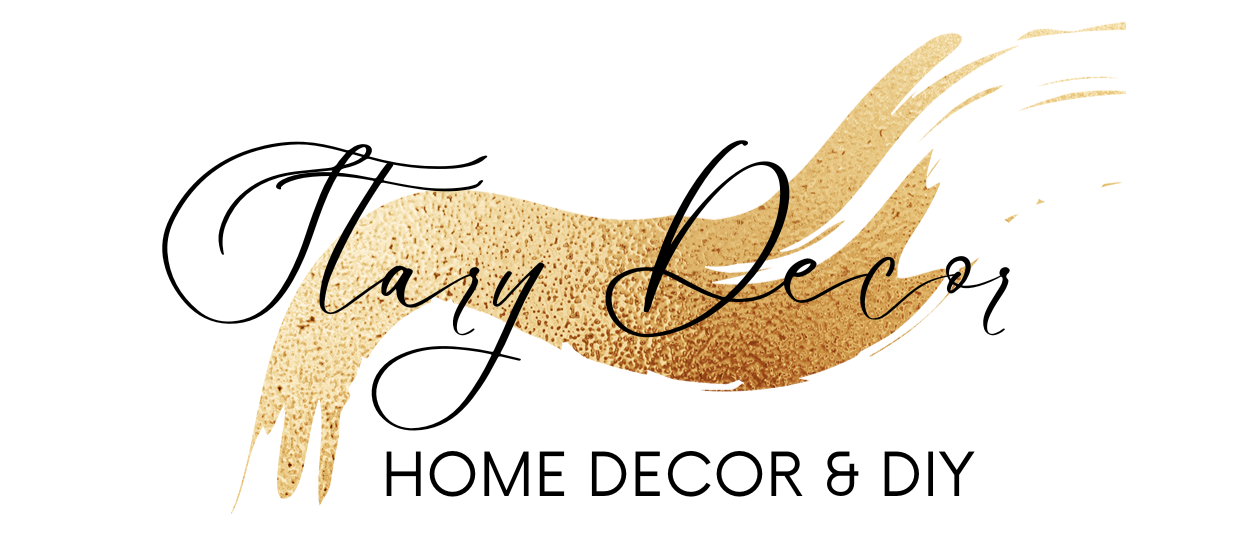Traditional bathroom vanity – Step into the world of traditional bathroom vanities, where classic designs meet modern functionality. From elegant wood finishes to intricate hardware, these vanities exude a timeless charm that elevates any bathroom’s aesthetic.
Explore the defining characteristics, materials, finishes, and storage solutions that make traditional bathroom vanities a perfect blend of style and practicality. Discover the different sink options, countertop materials, and backsplash choices that allow you to customize your vanity to match your unique taste.
Traditional Bathroom Vanity Styles
Traditional bathroom vanities evoke a sense of timeless elegance and sophistication. They are characterized by classic designs that have stood the test of time, often incorporating intricate details and ornate hardware.
Popular traditional vanity designs include:
Pedestal Vanities
Pedestal vanities are freestanding vanities supported by a single pedestal or two legs. They are typically made of porcelain or ceramic and feature a classic, timeless look.
Console Vanities
Console vanities are wall-mounted vanities that consist of a countertop supported by brackets or legs. They offer a more modern take on the traditional vanity, with a clean and uncluttered design.
Furniture Vanities
Furniture vanities are freestanding vanities that resemble traditional furniture pieces, such as dressers or armoires. They often feature drawers, cabinets, and decorative details, providing ample storage space and a touch of elegance.
Materials Used in Traditional Vanities
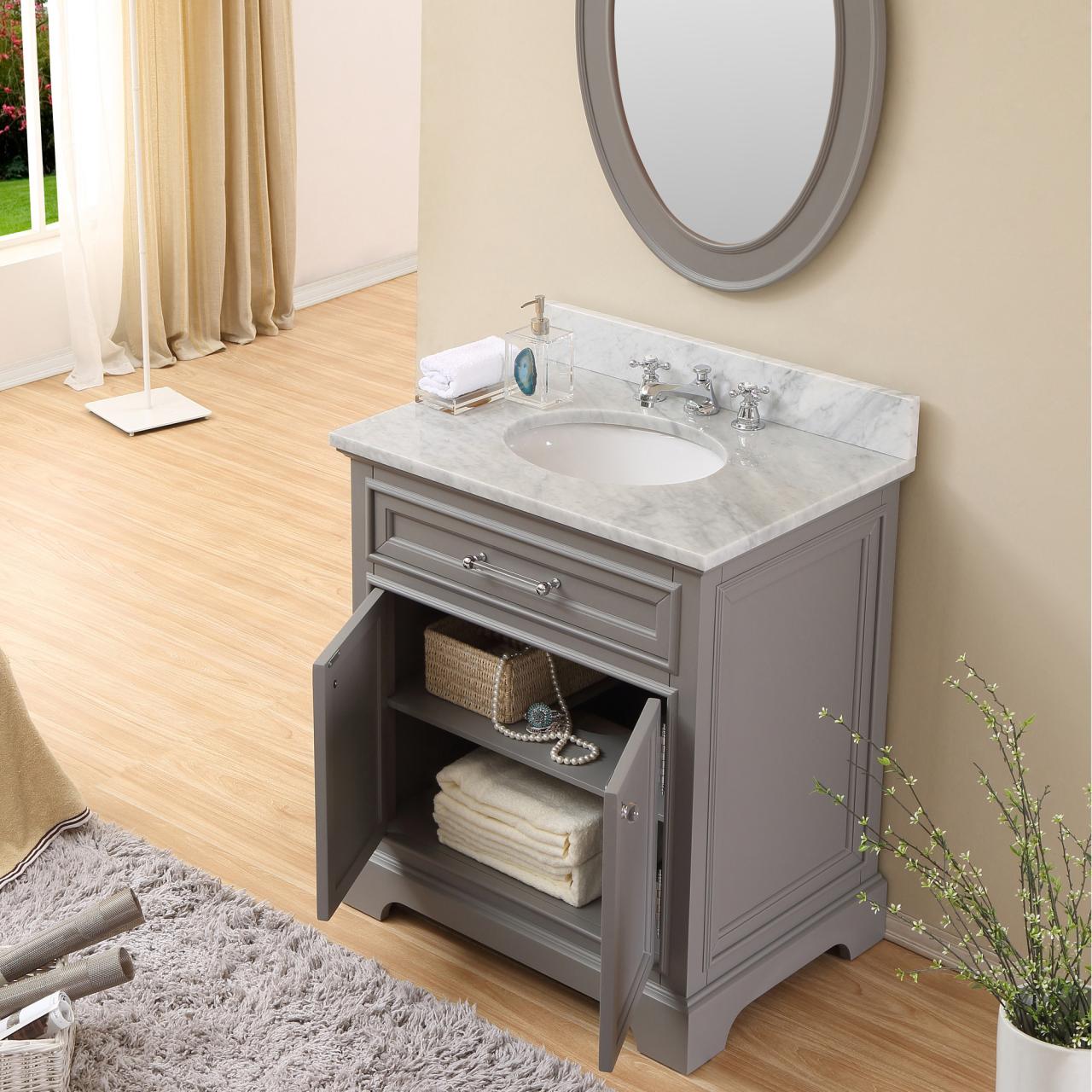
Traditional bathroom vanities often feature a timeless and elegant aesthetic. The materials used in their construction play a significant role in achieving this classic look and feel.
Wood
- Advantages:Natural warmth, durability, versatility in styles
- Disadvantages:Requires regular maintenance, can be susceptible to moisture damage
Stone
- Advantages:Durable, luxurious appearance, heat resistance
- Disadvantages:Expensive, heavy, can be difficult to repair
Porcelain
- Advantages:Durable, easy to clean, wide range of colors and finishes
- Disadvantages:Can chip or crack if not handled carefully, may not be as visually appealing as natural materials
Finishes and Hardware
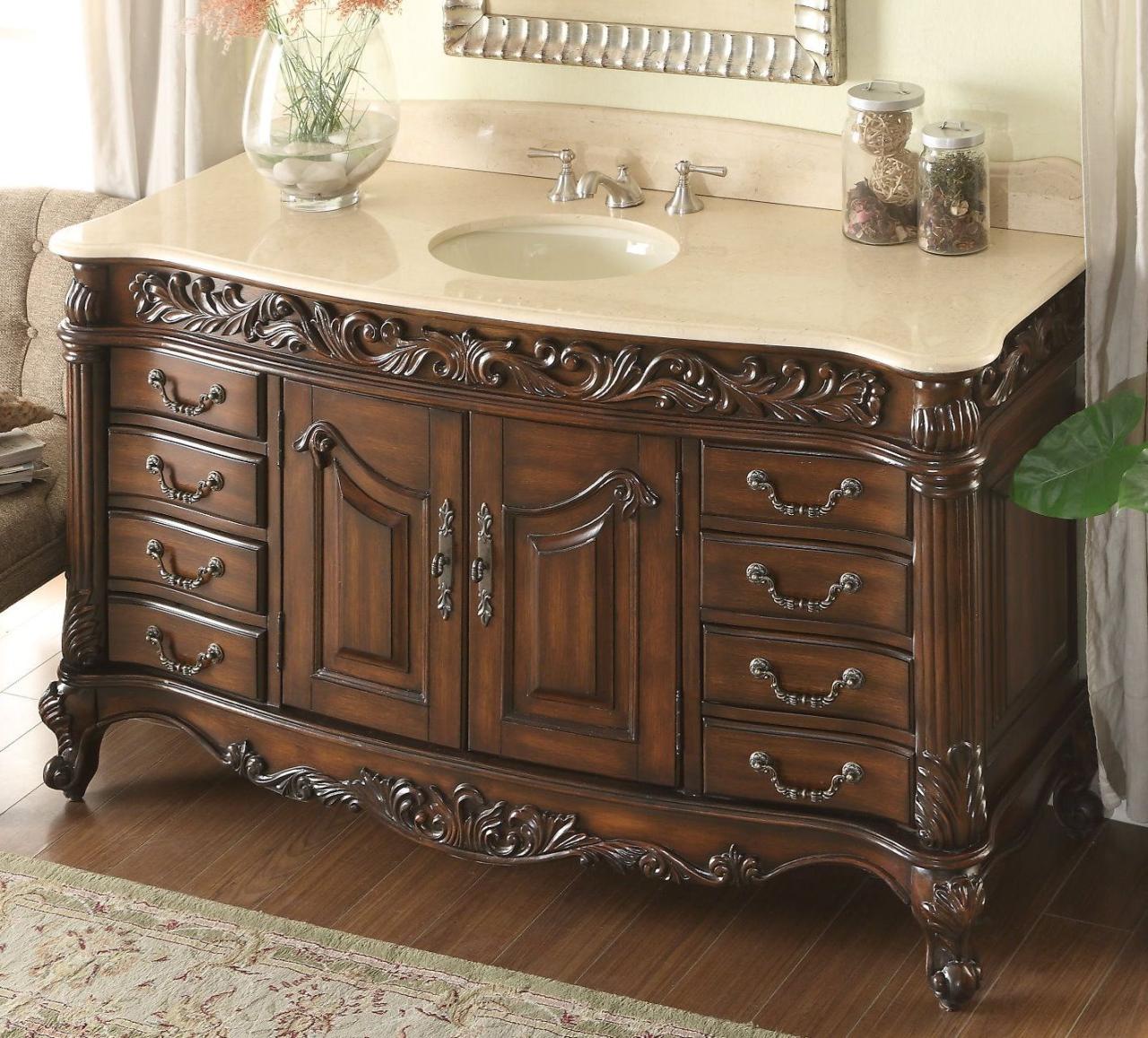
Traditional bathroom vanities are typically finished with a combination of wood, paint, and hardware. The wood finish can be stained or painted to match the other elements in the bathroom, and the hardware can be made of brass, chrome, or nickel.These
elements contribute to the overall aesthetic of the vanity by adding a touch of elegance and sophistication. The wood finish can help to create a warm and inviting atmosphere, while the hardware can add a touch of polish and glamour.
Hardware
The hardware on a traditional bathroom vanity is typically made of brass, chrome, or nickel. The finish of the hardware should match the finish of the other fixtures in the bathroom, such as the faucets and towel bars.The hardware on a traditional bathroom vanity can include the following:* Knobs and pulls
- Hinges
- Drawer slides
- Towel bars
- Toilet paper holders
Storage Solutions
Traditional bathroom vanities offer ample storage solutions to keep your bathroom organized and clutter-free. From spacious drawers to concealed compartments, these vanities provide ample space to store toiletries, linens, and other bathroom essentials.Maximizing storage space in a traditional bathroom vanity involves utilizing every available nook and cranny.
Consider installing drawers with dividers to separate items and keep them organized. Utilize the space under the sink by installing a pull-out drawer or shelves to store bulky items.
Shelves and Drawers
Traditional bathroom vanities often feature a combination of shelves and drawers. Shelves provide easy access to frequently used items, while drawers offer concealed storage for more private belongings. Some vanities also include pull-out drawers with adjustable dividers to accommodate different storage needs.
Hidden Compartments
In addition to visible storage, traditional bathroom vanities may incorporate hidden compartments. These compartments can be concealed behind doors or panels, providing a discreet place to store valuables or personal items.
Towel Bars and Hooks
Many traditional bathroom vanities include built-in towel bars or hooks. These accessories provide a convenient way to store towels, robes, and other bathroom textiles, keeping them within easy reach while maintaining a tidy appearance.
Sink Options
When choosing a sink for your traditional bathroom vanity, you’ll have several options to consider. Each type offers unique advantages and disadvantages, so it’s important to weigh the pros and cons carefully before making a decision.
Sink Materials
- Ceramic:Ceramic sinks are durable, easy to clean, and available in a wide range of colors and styles. However, they can be more expensive than other materials and may chip or crack if not handled carefully.
- Porcelain:Porcelain sinks are similar to ceramic sinks but are made from a finer clay that results in a smoother, more durable finish. They are also more expensive than ceramic sinks.
- Acrylic:Acrylic sinks are lightweight, affordable, and available in a variety of colors and patterns. However, they can scratch more easily than other materials.
- Cast Iron:Cast iron sinks are extremely durable and can withstand heavy use. However, they are also very heavy and expensive.
Sink Styles
- Pedestal sinks:Pedestal sinks are mounted on a single pedestal, which gives them a classic, elegant look. However, they can be more difficult to clean around than other types of sinks.
- Console sinks:Console sinks are mounted on a console table, which provides additional storage space. They are a good option for smaller bathrooms.
- Wall-mounted sinks:Wall-mounted sinks are mounted on the wall, which gives them a modern, minimalist look. They are a good option for small bathrooms or bathrooms with limited floor space.
- Undermount sinks:Undermount sinks are mounted below the countertop, which creates a seamless look. They are a good option for modern or contemporary bathrooms.
Sink Size and Shape
The size and shape of your sink will depend on the size of your bathroom and the style of vanity you choose. Smaller sinks are a good option for smaller bathrooms or bathrooms with limited counter space. Larger sinks are a good option for larger bathrooms or bathrooms with more counter space.
Factors to Consider, Traditional bathroom vanity
When choosing a sink for your traditional bathroom vanity, you should consider the following factors:
- The size of your bathroom
- The style of your vanity
- Your budget
- Your personal preferences
Countertop Materials
Countertops are a key component of any bathroom vanity, and the material you choose will have a big impact on the overall look and feel of your bathroom. Traditional bathroom vanities typically feature countertops made from natural stone, such as marble or granite, or from man-made materials, such as quartz or solid surface.
Each type of countertop material has its own advantages and disadvantages, so it’s important to do your research before making a decision. Here is a brief overview of the most popular countertop materials for traditional bathroom vanities:
Marble
- Advantages: Marble is a beautiful and classic material that adds a touch of luxury to any bathroom. It is also very durable and easy to clean.
- Disadvantages: Marble is a relatively expensive material, and it can be scratched or stained if not properly sealed.
Granite
- Advantages: Granite is another durable and easy-to-clean material that is available in a wide range of colors and patterns. It is also heat-resistant, making it a good choice for bathrooms with heated floors.
- Disadvantages: Granite is also a relatively expensive material, and it can be difficult to find a perfect match for your vanity if you need to replace it.
Quartz
- Advantages: Quartz is a man-made material that is engineered to be durable, non-porous, and stain-resistant. It is also available in a wide range of colors and patterns, making it a versatile choice for any bathroom.
- Disadvantages: Quartz is more expensive than some other countertop materials, and it can be difficult to find a perfect match for your vanity if you need to replace it.
Solid Surface
- Advantages: Solid surface is a man-made material that is durable, non-porous, and stain-resistant. It is also available in a wide range of colors and patterns, and it can be molded into any shape, making it a good choice for custom vanities.
- Disadvantages: Solid surface is more expensive than some other countertop materials, and it can be scratched if not properly cared for.
Backsplash Options
Incorporating a backsplash in a traditional bathroom vanity design adds an extra layer of style and protection against water damage. There are various backsplash options to choose from, each with its unique characteristics.
The backsplash material should complement the vanity’s style and finish. For example, a marble backsplash pairs well with a traditional vanity made of dark wood, while a ceramic tile backsplash can add a touch of color and pattern to a white vanity.
Types of Backsplash Materials
- Ceramic Tile:Durable, easy to clean, and available in a wide range of colors, patterns, and textures.
- Natural Stone:Luxurious and timeless, natural stone like marble or granite offers a unique and elegant look.
- Glass:Modern and reflective, glass backsplashes can add a touch of glamour to the bathroom.
- Wood:Warm and inviting, wood backsplashes can complement traditional vanities made of the same material.
- Beadboard:A classic choice for traditional bathrooms, beadboard backsplashes feature vertical grooves that add depth and texture.
Lighting Considerations
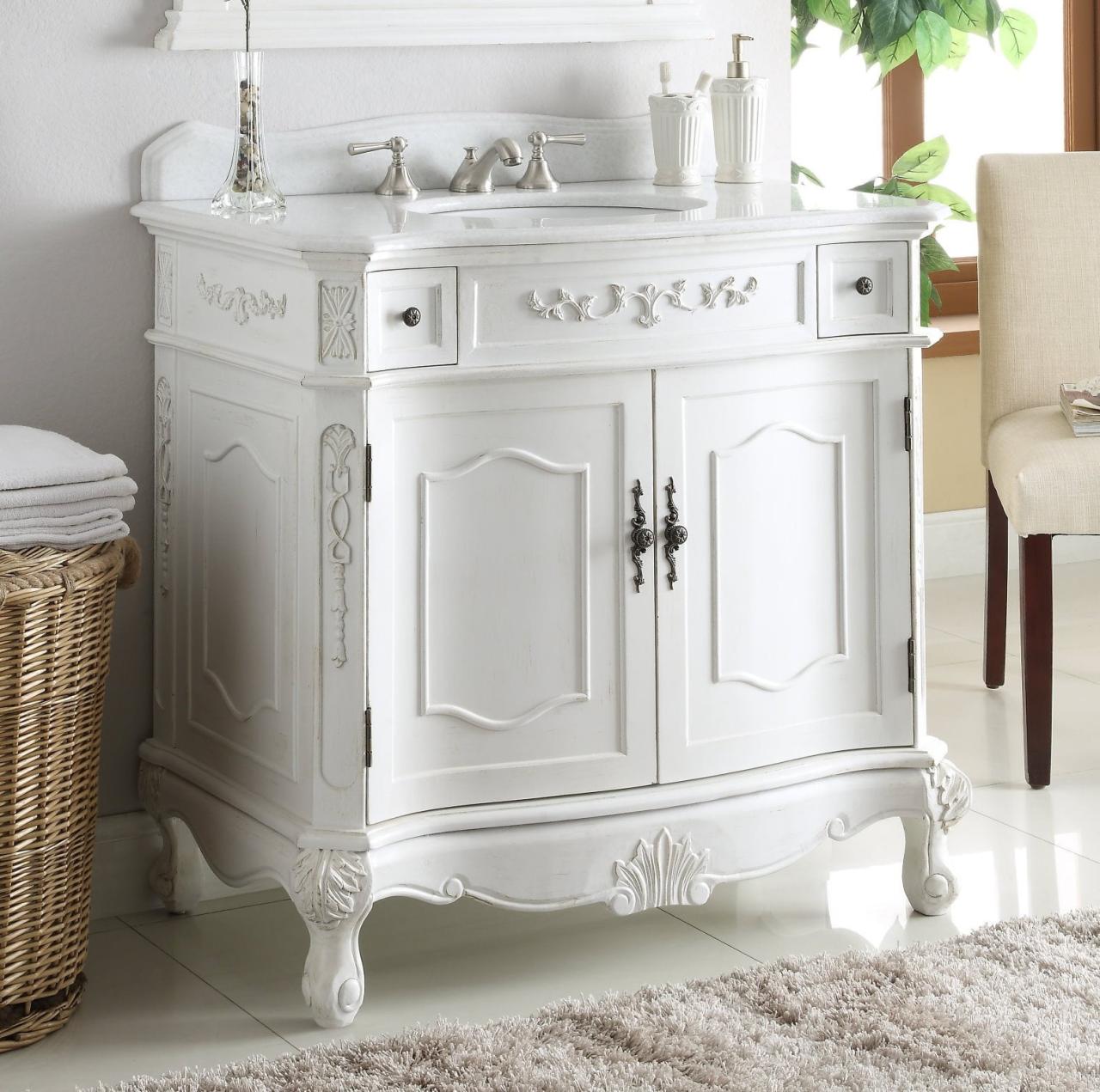
Lighting plays a vital role in the overall functionality and ambiance of a traditional bathroom vanity. Proper lighting can enhance the vanity’s aesthetic appeal, create a comfortable atmosphere, and improve visibility for tasks such as grooming and makeup application.
When choosing lighting fixtures for a traditional bathroom vanity, consider the following tips:
Positioning
- Vanity mirror lights:Positioned above or around the mirror, these lights provide direct illumination for tasks like shaving and makeup application.
- Ambient lights:Overhead fixtures or wall-mounted sconces provide general illumination for the bathroom space.
Types of Fixtures
- Chandeliers:Traditional chandeliers with crystal or glass accents add a touch of elegance to larger bathrooms.
- Wall sconces:Mounted on either side of the mirror, wall sconces provide focused lighting for vanity tasks.
- Pendant lights:Hung from the ceiling above the vanity, pendant lights create a decorative focal point.
Style and Finish
Choose lighting fixtures that complement the overall design style of your traditional bathroom vanity. Consider finishes such as brushed nickel, polished brass, or oil-rubbed bronze to match the hardware and other accents.
Brightness and Color Temperature
Select lighting fixtures with appropriate brightness and color temperature for your bathroom. Warm white or soft white light bulbs create a cozy and inviting atmosphere, while cool white light provides better visibility for tasks.
Design Ideas
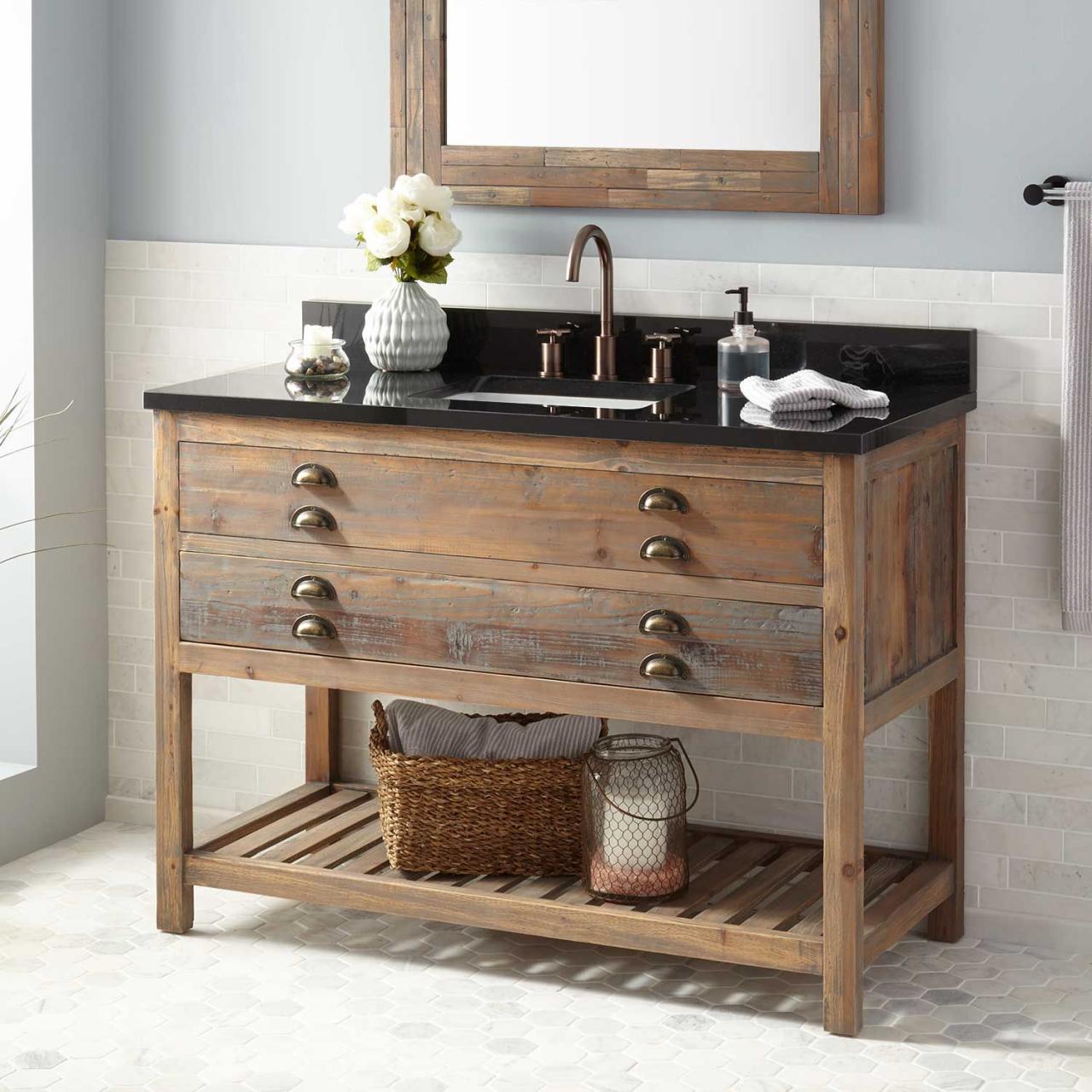
Incorporate traditional bathroom vanities into various bathroom styles with creative design ideas. From classic and elegant to modern and eclectic, there are endless possibilities to create a stunning bathroom that reflects your unique taste.
Here are some examples of stunning bathroom designs featuring traditional vanities:
Classic and Elegant
- Pair a traditional vanity with marble countertops and a clawfoot bathtub for a timeless and elegant look.
- Use a vanity with intricate carvings and moldings to add a touch of opulence to your bathroom.
- Choose a vanity with a rich wood finish to create a warm and inviting atmosphere.
Modern and Eclectic
- Combine a traditional vanity with modern fixtures and hardware for a unique and eclectic look.
- Use a vanity with a clean and simple design to create a minimalist and modern bathroom.
- Choose a vanity with a unique finish or color to add a touch of personality to your bathroom.
Cost Considerations: Traditional Bathroom Vanity
The cost of traditional bathroom vanities varies depending on several factors, including size, materials, finishes, and features. Here’s a breakdown of the key cost drivers:
Size:Larger vanities generally cost more than smaller ones, as they require more materials and labor to build.
Materials:The type of materials used in the construction of the vanity can significantly impact its cost. Solid wood vanities are typically the most expensive, followed by vanities made from engineered wood, laminate, or MDF.
Finishes:The finish applied to the vanity can also affect its cost. Painted vanities are generally less expensive than stained or glazed vanities.
Features:Vanities with additional features, such as drawers, shelves, or built-in lighting, will typically cost more than those without these features.
Tips for Finding Affordable Options
If you’re on a budget, there are several ways to find affordable traditional bathroom vanities:
- Shop around:Compare prices from different retailers before making a purchase. You may be able to find the same vanity for a lower price at a different store.
- Consider a smaller size:A smaller vanity will typically cost less than a larger one.
- Choose a less expensive material:Engineered wood, laminate, or MDF vanities are all less expensive than solid wood vanities.
- Opt for a basic finish:Painted vanities are generally less expensive than stained or glazed vanities.
- Look for sales and discounts:Many retailers offer sales and discounts on bathroom vanities throughout the year.
Installation and Maintenance
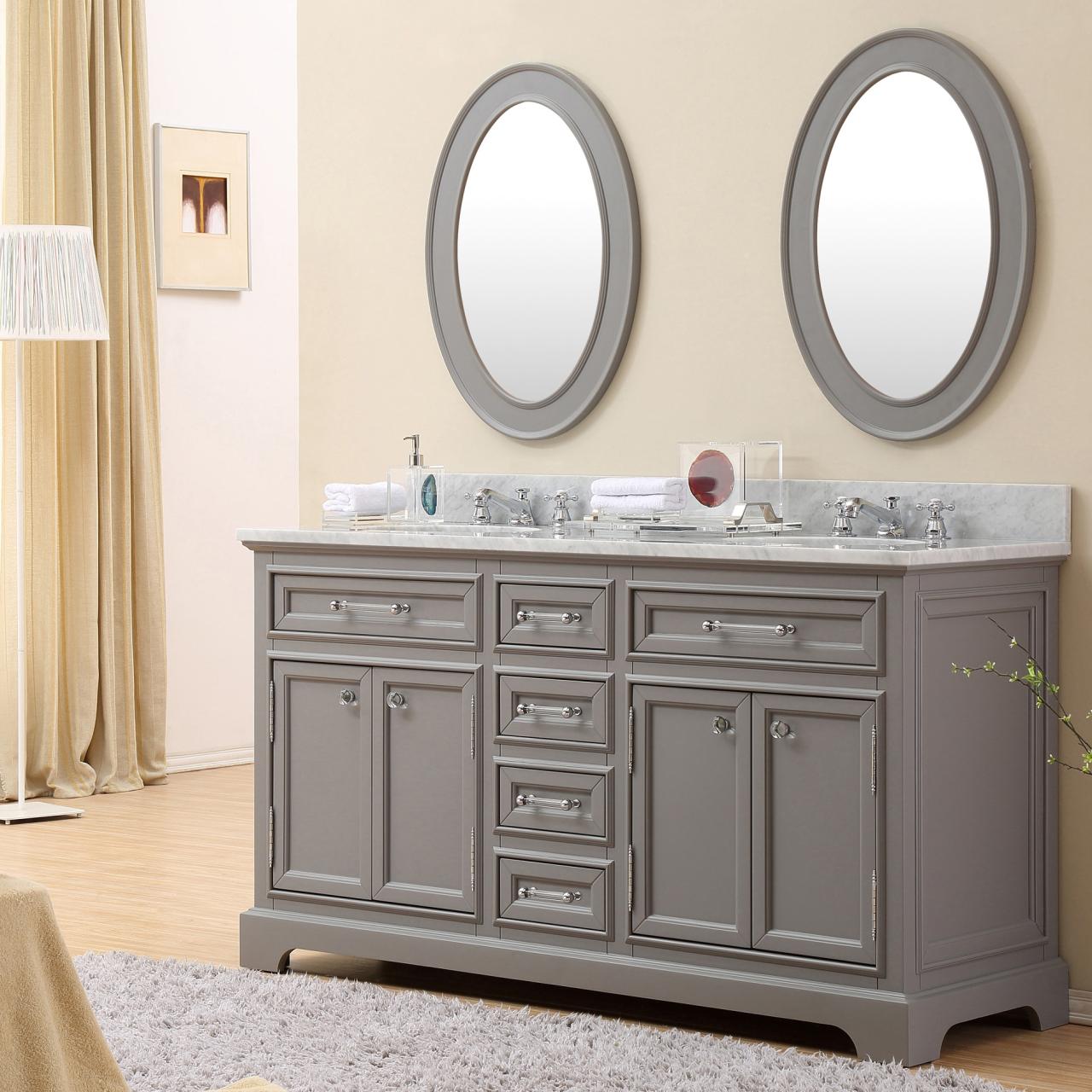
Installing and maintaining a traditional bathroom vanity is essential for its longevity and functionality. Follow these steps for proper installation and care.
Installation
- Prepare the Space:Clear the area where the vanity will be installed and ensure it is level.
- Assemble the Vanity:Follow the manufacturer’s instructions to assemble the vanity, including the cabinet, countertop, and sink.
- Secure the Vanity:Place the vanity in the desired location and secure it to the wall or floor using screws or brackets.
- Connect the Plumbing:Attach the vanity to the water supply and drain pipes according to the plumbing code.
- Install the Sink:Place the sink into the countertop opening and secure it with sealant.
Maintenance
- Regular Cleaning:Use a mild soap and water solution to clean the vanity surfaces, countertop, and sink regularly.
- Protect the Finish:Avoid using abrasive cleaners or harsh chemicals that can damage the finish.
- Tighten Hardware:Periodically check and tighten any loose screws or handles to prevent damage.
- Repair Leaks:Address any leaks promptly to prevent water damage to the vanity and surrounding area.
- Reseal the Sink:Reapply sealant around the sink periodically to maintain a watertight seal.
Final Wrap-Up
Whether you’re seeking a grand statement piece or a subtle touch of tradition, traditional bathroom vanities offer a versatile solution that complements any bathroom style. Their enduring appeal and timeless elegance ensure that they will remain a popular choice for years to come.
